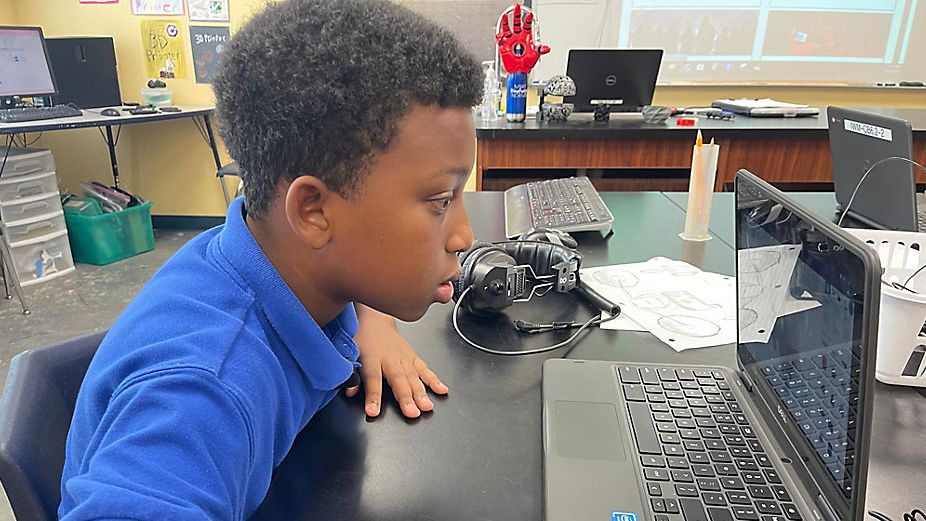WEST MELBOURNE, Fla. — A first of it's kind mission is coming up soon for NASA: Lucy, which will study asteroids following Jupiter's path around the Sun.
What You Need To Know
- NASA's Lucy mission is scheduled to launch from Cape Canaveral on Oct. 16
- The spacecraft will spend the next 12 years exploring asteroids in the wake of Jupiter as it travels around the sun
- Scientists hope data collected during the mission will help them understand the origins and formation of the solar system
The mission is being followed by scientists and space enthusiasts alike — even local Space Coast students are excited about it.
Mr. Williams' STEAM class is one of 11-year-old Kristian Samlal's favorite parts of the day at Imagine Schools At West Melbourne, and these days he's laser focused on NASA's Lucy mission.
"I'm working on the Lucy robot so we can make a 3D model of it," Samlal said, while using his laptop.
He and his classmates Jayden and Luna will be eagerly watching this first mission to explore the Trojan asteroids of Jupiter.
The asteroids are space travelers left over from the early solar system in what NASA calls "swarms" tagging along with the giant planet as it circles the Sun.
Scientists hope to bolster their knowledge of the origins and formation of our solar system using data from the Lucy mission.
"The science that we're going to glean from it, I believe, will change science books," said NASA's Lucy Program Project Manager Donna Douglas-Bradshaw. "Imagine the information we will uncover regarding the origins of our solar system."
Samlal is impressed with NASA's bold effort to explore the asteroids.
"I like how they were able to figure out a good program to make it move around and meet each and every Trojan," he said.
The mission will last 12 years as the spacecraft flies by a record number of asteroids orbiting the sun.
The NASA Lucy mission is set to blast off from Cape Canaveral Space Force Station on Oct. 16.



